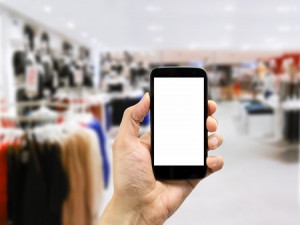
When one thinks of digital in the retail space, it's likely that one's first thought is of the e-environment: e-commerce, e-stores and the decline of the bricks and mortar retailer. But - at least in the South African context - this perception of digital in retail would be misplaced.
According to an Online vs In-Store Shopping report compiled by shopping centre and property research company Urban Studies, online retail accounts for just 1,2% of retail trade in South Africa compared to 16,8% in the UK and over 13% in the US and Germany.
Meanwhile, local bricks and mortar retail is booming. According to the International Council of Shopping Centres Country Fact Sheet, South Africa has the fifth highest number of shopping malls in the world - 1 942 - behind countries with far larger populations such as the US, China and Japan. Canada, with a smaller population than South Africa, has a higher shopping mall density.
However, digital technologies are starting to play an increasingly important role in bricks and mortar retail in South Africa.
While, much attention has been paid to the way in which this is being used to improve the in-store customer experience, there's a whole other aspect to digital retail that's quietly revolutionising retail in ways in which customers are unaware.
customer behaviour
In its report "The Future of the Digital Store", Forrester Research notes that digital store technologies used within bricks and mortar stores to better understand customer behaviour and glean customer insights are still largely in their infancy.
The report's author, Fiona Swerdlow, believes these technologies may have a far larger impact on retail success than the higher-profile customer-facing technologies. She emphasises that for digital store technology to be most effective, these solutions must generate insights in real time so that action can be taken by in-store staff while the customer is still around.
Barry Baetu, MD of Johannesburg-based Harmonic Computer Services, agrees.
"South African retailers have long sought to understand customers' in-store behaviour. For example, a few years ago we were involved in the implementation of an Intelligent Tracking and Control System at a major local retailer. We placed RFID tags on the shopping trolleys, enabling the retailer to track each customers' movements through the store. They could then use this information to evaluate not only traffic patterns, but also where customers stopped."
According to Baetu, newer technologies such as that developed by AdMobilize in the United States, are now changing the face of "people metrics" around the world, including in South Africa.
Admobilize technology not only enables retailers to determine the number of customers entering their store at any time of the day, but where they are within the store, and how long they spend at particular displays. In addition, it analyses their appearance to determine their demographic and their emotional demeanour at the time of their shopping or viewing experience - in real time.
"All this enables retailers to understand the make-up of their customer pool by gender, age range, race, or any other demographic the retailer deems important. It can also analyse the customer's emotion at the time: harried, happy, sad, angry and so on. As all this information is provided in real-time, they can act on it immediately should they choose to do so," Baetu explains.
According to Forrester, other anticipated impacts of the digital retail store include:
* Personalised shopping experiences, allowing retailers to influence customers' in-store buying decisions;
* Improved service levels; and
* Improved merchandising.
Share